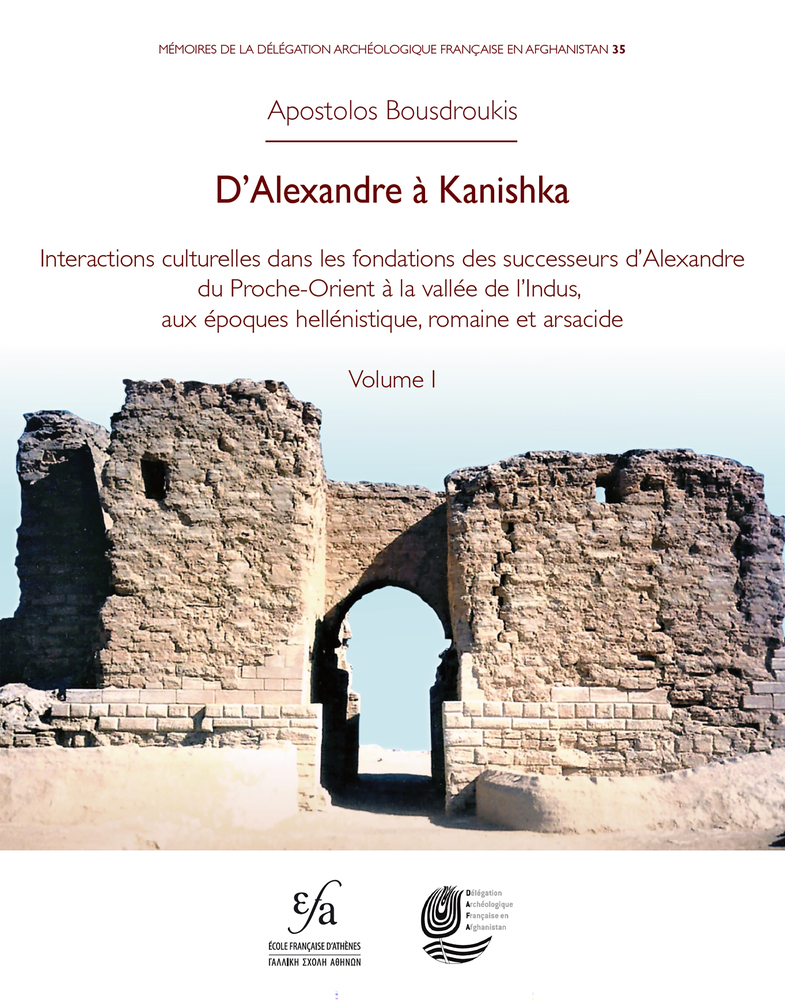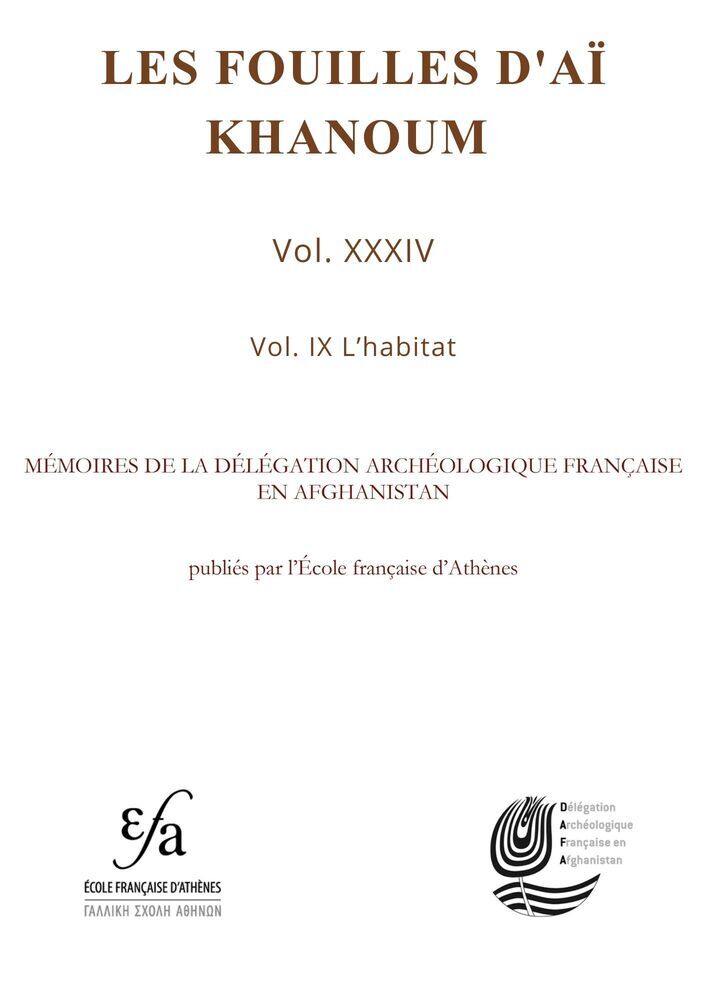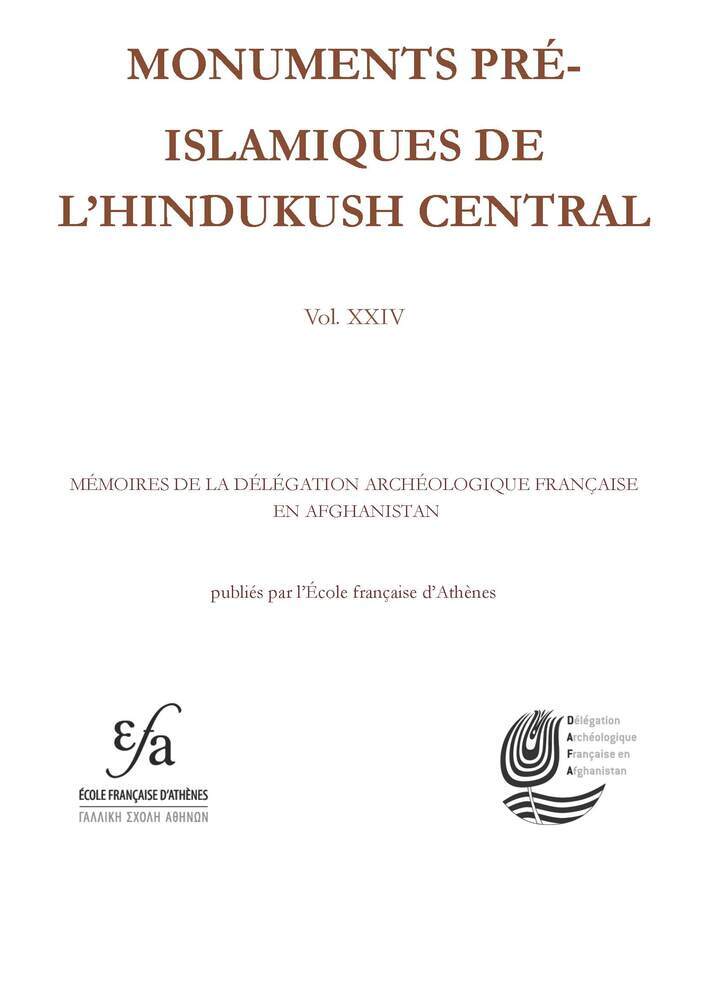D’Alexandre à Kanishka
Interactions culturelles dans les fondations des successeurs d’Alexandre, du Proche-Orient à la vallée de l’Indus, aux époques hellénistique, romaine et arsacide
2 volumes
De la Méditerranée orientale à la vallée de l’Indus, les successeurs d’Alexandre le Grand ont fondé, dès le IVe siècle av. J.-C., un réseau impressionnant de cités inspirées des modèles urbains macédoniens. Qui étaient leurs habitants ? Comment ces villes ont-elles fonctionné et évolué dans des contextes culturels aussi divers que le Proche-Orient, la Mésopotamie ou la Bactriane ? Dans cet ouvrage en deux volumes, Apostolos Bousdroukis nous invite à redécouvrir ces fondations à travers une enquête érudite, appuyée sur les données archéologiques les plus récentes. Institutions civiques, monuments publics, sanctuaires, maisons, pratiques religieuses : chaque cité est étudiée dans sa spécificité, mais aussi dans sa capacité à intégrer, transformer ou conjuguer les traditions locales et les apports grecs. Loin de se limiter à une simple histoire urbaine, l’ouvrage met en lumière les interactions complexes entre les colons grecs et les populations locales : adoption, adaptation, mais aussi hybridation des cultures. L’étude révèle comment ces cités sont devenues des foyers dynamiques d’échanges et d’innovations culturelles, contribuant à façonner des identités nouvelles dans un monde en pleine reconfiguration.
Un livre essentiel pour comprendre la fabrique des identités dans l’Orient ancien !
Apostolos Bousdroukis est membre de l’équipe « Archéologie de l’Asie centrale » (ArScAn UMR 7041, Université de Paris X – Nanterre). Ses recherches portent principalement sur l’Histoire du ProcheOrient et de l’Asie centrale occidentale aux époques hellénistique, romaine, et parthe. Il s’intéresse en particulier aux interactions entre Grecs et populations indigènes.
From the Eastern Mediterranean to the Indus Valley, the successors of Alexander the Great founded, as early as the 4th century BCE, an impressive network of cities inspired by Macedonian urban models. Who were their inhabitants? How did these cities function and evolve within such diverse cultural contexts as the Near East, Mesopotamia, or Bactria? In this two-volume work, Apostolos Bousdroukis invites us to rediscover these foundations through a scholarly investigation grounded in the most recent archaeological evidence. Civic institutions, public monuments, sanctuaries, domestic architecture, and religious practices are all examined, not only in their local particularities but also in their capacity to absorb, transform, or blend Greek and indigenous traditions. Far from offering a simple urban history, this study sheds light on the complex interactions between Greek settlers and local populations — encompassing processes of adoption, adaptation, and cultural hybridization. It reveals how these cities became dynamic centers of exchange and cultural innovation, contributing to the shaping of new identities in a world undergoing profound transformation.
An essential work for understanding how identities were constructed in the ancient East.
Apostolos Bousdroukis is a member of the “Central Asian Archaeology” team (ArScAn UMR 7041, University of Paris X – Nanterre). His research focuses on the history of the Near East and Western Central Asia during the Hellenistic, Roman, and Parthian periods, with particular interest in the interactions between Greeks and indigenous populations.






